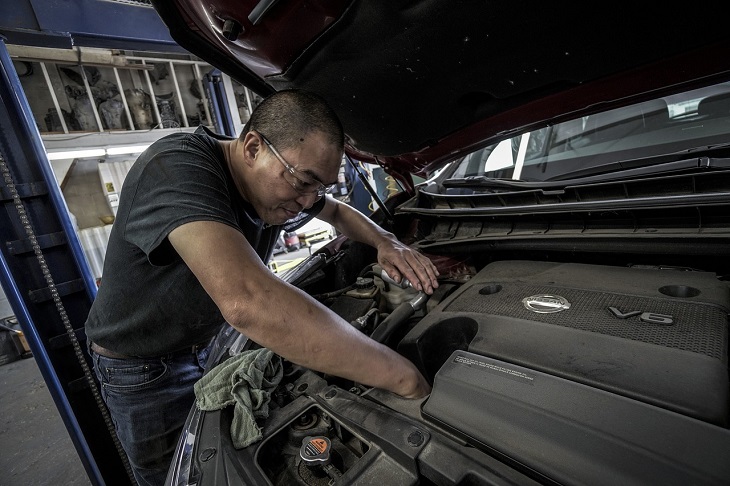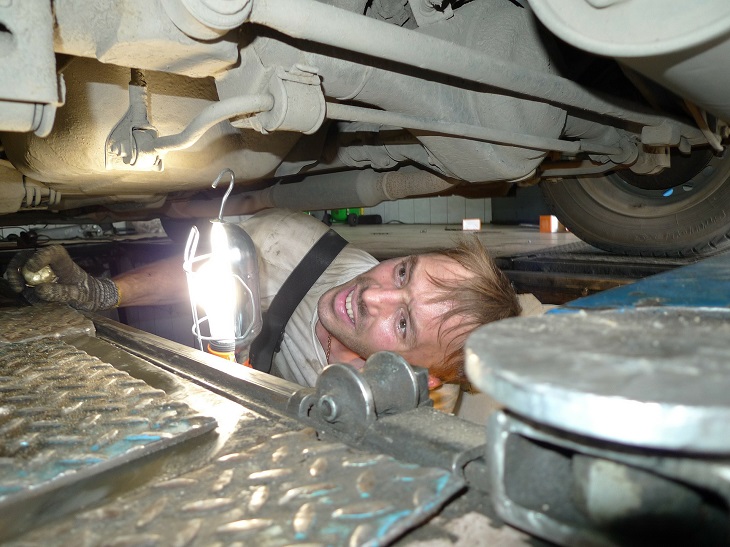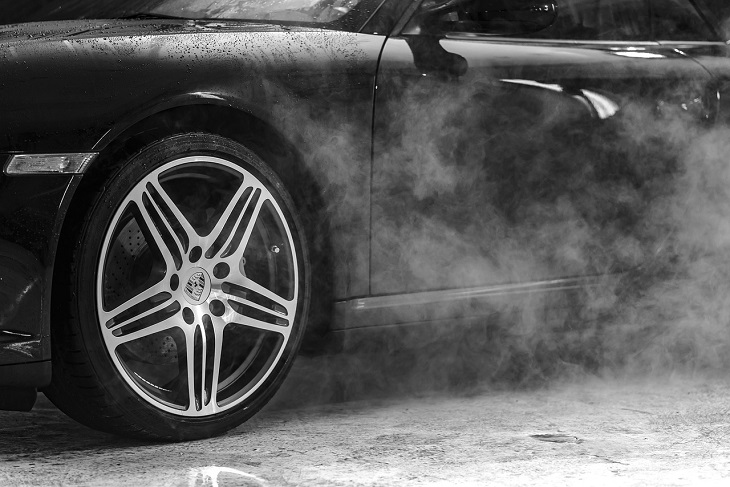
When it comes to their private cars, people tend to have different perspectives. Some treat them as prized possessions, whereas others see them as a means to get from one place to another. Nonetheless, it's undeniable that a car is the most popular form of transportation. We all want to keep our vehicles in pristine condition and running efficiently. We may try to avoid visiting the mechanic, but there are times when we have no other option but to take the car in for inspection or repairs. If you ask professional and dependable mechanics, they will tell you that they know many examples of people who tried to dodge a trip to the garage. However, they ended up causing more damage to their car and even heftier expenses in the end.

Mechanics all over the world implore drivers to stop committing the following 7 mistakes with their vehicles. These mistakes are not only detrimental to the car, but also to the safety of the driver. One of these mistakes is ignoring the lights on the dashboard. Though some people take their car to a garage as soon as a light turns on, many drivers choose to ignore the warning signs. They hope that the issue will resolve itself or that they can put off the repair until their next scheduled service. This approach can be incredibly dangerous and should be avoided.
The array of lights on the dashboard is there for a reason: to alert you to a fault with the car ranging from engine issues to the air conditioning system, the tires, and even the in-car entertainment system. These lights seldom come on by chance, and they often point to a real problem. If ignored, it can be expensive, but in serious cases, it can be a hazard to your life as well as that of other passengers. If you see a light, and you don't know what to do, take the car to the nearest garage without delay. It is also imperative not to wait too long for a regular inspection.
Even if you own one of the most recent car models, regular and precise maintenance is essential. It's not just about keeping an eye on your oil and water levels or being charged for services you don't require. These tests are incredibly significant for the operation of your car.
An example of this is engine coolant, which not only keeps the engine from overheating but also helps to protect against internal corrosion due to the added components. Over time, however, these ingredients begin to lose their potency and become ineffective. A routine inspection of the fluid could identify the need for a replacement, which could cost anywhere from tens to hundreds of dollars. Ignoring the check could mean that corrosion is left undetected. This could result in a more costly repair such as replacing the radiator or cooling system and could run into several thousand dollars or more. It is therefore better to take precautionary steps and maintain regular inspections rather than wait for a problem to occur.

This should be obvious - a car in good condition does not make screeching noises, squeaks, or clicks. If you notice one or several of these sounds from your vehicle, it can mean any of the following:
If your vehicle makes these or other unusual noises, be sure to take it in for inspection as soon as possible. Don't rely on luck - car parts that make strange noises won't fix themselves. If you don't take care of them, they are bound to cause even greater damage to the car, so don't ignore them.
Much like you shouldn't overlook any odd sounds your car makes, you should also take note of any odors. If the vehicle smells of burned oil, that usually implies that oil or some other liquid has leaked onto the hot engine and into the car's exhaust pipes. The sooner you notice the scent that indicates this issue, the better. If ignored, it may even result in combustion.
Other scents you ought to recognize promptly are:
It's important to keep in mind that weird odors coming from your car are not normal, rational, or obvious. Ignoring these smells may increase the cost of repairs in the future. Therefore, it is wise to heed your nose and take your car to the nearest garage when necessary. Anything that can damage your vehicle, for example, a car surrounded by smoke must be avoided.

The price of tires is not low; no wonder car owners try to use their tires as long as they are usable and have no overhead before spending a lot of money to replace them. However, stretching the use of the tire to the last drop of air in it can cost you much more than the price of the tire itself. Various studies and tests have shown that driving with a tire with worn outer parts\ causes an increase in the stopping distance for the vehicle as well as an increase in the risk of slipping on a wet road, which can lead to fatal traffic accidents. In addition, it was found that even an innocent slide into a curb on the side of the road with a flat tire could cause untold damage to your vehicle. Therefore, pay close attention to the condition of your car's tires, and do not hesitate to go to the garage to change them regularly - it will probably cost you less than the damage that driving on worn tires can cause.
When fluid begins to seep from your vehicle and appears as a large oil stain when parked or on the road, this is a sign that something is leaking from the engine, power steering, transmission, brake system, or one of the vehicle's seals. The low fluid level of the leaking car part can cause it to overheat and cause a major issue. You can figure out the source of the leak by looking at the color of the stain on the ground: generally, the engine oil will appear brown, coolant is any color between green, yellow, orange, red, or blue, power steering and gearbox fluid is a light or dark red, fresh brake fluid is honey-colored, and used brake fluid has a brownish-brown hue that isn't greasy like engine oil.
Once you understand where the problem comes from, try to check the fluid level in this part of the vehicle. If you know where the measuring device is, you will see that the amount of fluids in it is indeed low. Either way, under no circumstances, should you ignore the suspicious stain, and the moment you notice it - hurry to take care of your vehicle as soon as possible.

The engine in your car can heat up for any number of reasons: a coolant leak, a radiator that is blocked or has a fan failure, a tear in one of the pipes or belts, a stuck thermostat, or a faulty water pump. One way or another, repairing these damages can cost you, but if you ignore the warning signs that indicate the engine has overheated and continue to drive even after the indicator lamp has turned on, you risk a general shutdown of the engine, the price of the repair of which will amount to several tens of thousands of dollars.
In older cars that used a steel engine, you could use a method of driving that allowed you to continue on for a few extra kilometers after the temperature warning light lit up. All you had to do was turn the air conditioning to the highest setting and make stops in between to let the engine cool off. However, this practice no longer works on current vehicles with aluminum engines. When the engine is running too hot for more than five minutes, it can cause serious harm to the head gasket, resulting in a coolant leak and considerable damage to the car. So, if the temperature alert illuminates, the best thing to do is activate your hazard lights, pull over immediately, turn off the engine, and call a tow truck and repair services to take your car to the mechanic.